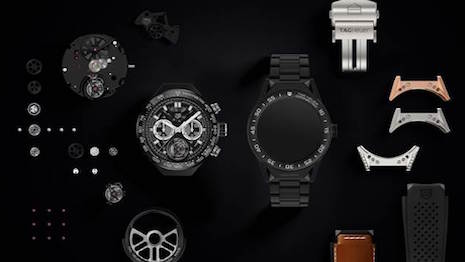 Tom Ford's spring/summer 2017 collection
Tom Ford's spring/summer 2017 collection
Immediacy is one of the most important aspects of the modern retail process, according to a report from Euromonitor, and for luxury brands this presents a challenge in balancing convenience with exclusivity.
The report covers the top 10 consumer trends globally, ranging from personalization to privacy and other pertinent topics. One thing that the report concluded was the now, more than ever, consumers expect a certain level of immediacy and convenience with their purchases, giving luxury brands an extra obstacle to negotiate.
See-now, buy-now
Trends change constantly and something that is taken as a fundamental truism can be out the window within a year.
That is why it is always important for brands to be on top of where consumers are leading them at any given moment. This was the guiding factor behind Euromonitor’s recent report on the top consumer trends around the world.
These trends cover a wide range of topics, touching on different parts of culture and retail analysis to support each thesis.
One of the most relevant to luxury however is Euromonitor’s statement on immediacy.
Consumers demand immediacy. The report labels modern consumers as “IWWIWWIWI” consumers: “I want what I want when I want it.”
 Consumers now expect immediacy and convenience when shopping
More often, consumers do not expect wait around for their services. With Amazon pushing to offer same-day deliveries, or even within the hour, brands cannot afford to be left behind.
Luxury brands, by the fact of their high-quality and exclusive nature, are not always able to meet those immediate demands. That inability has been the driving force behind one of the industry’s biggest attempts, the see-now, buy-now shopping model.
But this model has been under scrutiny since it first came into popularity. While many fashion houses adopted it immediately, some have already dropped it, such as Tom Ford.
The fashion brand cited difficulties relating to the store-shipping and fashion show schedules that made it challenging to have a collection for sale and on the runway at the same time. With other big fashion houses such as Thakoon also dropping see-now, buy-now, the fire of the business model looks like it could be slowly dying out, while some still defend this retail innovation (see story).
Immediacy vs. exclusivity
Despite the dropping of see-now, buy-now by some fashion brands, others are continuing to embrace it. LMVH-owned timepiece Tag Heuer recently announced that it’s newest watch model would be available on a see-now, buy-now basis.
Tag Heuer will distribute the Connected Modular 45 using a see-now, buy-now strategy, the first watchmaker to use the fashion concept. As of March 14, the Connected Modular 45 smartwatch can be purchased online, at Tag Heuer boutiques and through a selection of retailers (see story).
Consumers now expect immediacy and convenience when shopping
More often, consumers do not expect wait around for their services. With Amazon pushing to offer same-day deliveries, or even within the hour, brands cannot afford to be left behind.
Luxury brands, by the fact of their high-quality and exclusive nature, are not always able to meet those immediate demands. That inability has been the driving force behind one of the industry’s biggest attempts, the see-now, buy-now shopping model.
But this model has been under scrutiny since it first came into popularity. While many fashion houses adopted it immediately, some have already dropped it, such as Tom Ford.
The fashion brand cited difficulties relating to the store-shipping and fashion show schedules that made it challenging to have a collection for sale and on the runway at the same time. With other big fashion houses such as Thakoon also dropping see-now, buy-now, the fire of the business model looks like it could be slowly dying out, while some still defend this retail innovation (see story).
Immediacy vs. exclusivity
Despite the dropping of see-now, buy-now by some fashion brands, others are continuing to embrace it. LMVH-owned timepiece Tag Heuer recently announced that it’s newest watch model would be available on a see-now, buy-now basis.
Tag Heuer will distribute the Connected Modular 45 using a see-now, buy-now strategy, the first watchmaker to use the fashion concept. As of March 14, the Connected Modular 45 smartwatch can be purchased online, at Tag Heuer boutiques and through a selection of retailers (see story).
 Tag Heuer Connected Modular 45
But luxury brands will still have to wrestle with the difficult logistics of see-now, buy-now if they want to continue to give customers the immediacy they desire.
In addition to logistical difficulties, see-now, buy-now also presents a problem of tradition and expectation. Luxury fashion relies on both the tradition of a fashion show debuting a collection before it is available and the air of exclusivity that that process endows.
It is still too early to tell if the demand for immediacy from consumers is enough to sway the whole fashion industry in that direction, but it is something that fashion brands must pay attention to.
Tag Heuer Connected Modular 45
But luxury brands will still have to wrestle with the difficult logistics of see-now, buy-now if they want to continue to give customers the immediacy they desire.
In addition to logistical difficulties, see-now, buy-now also presents a problem of tradition and expectation. Luxury fashion relies on both the tradition of a fashion show debuting a collection before it is available and the air of exclusivity that that process endows.
It is still too early to tell if the demand for immediacy from consumers is enough to sway the whole fashion industry in that direction, but it is something that fashion brands must pay attention to.
